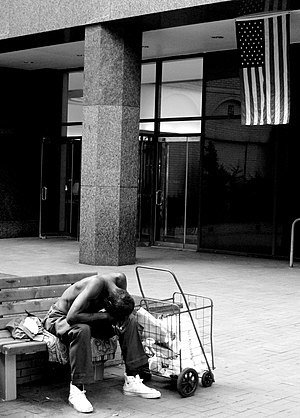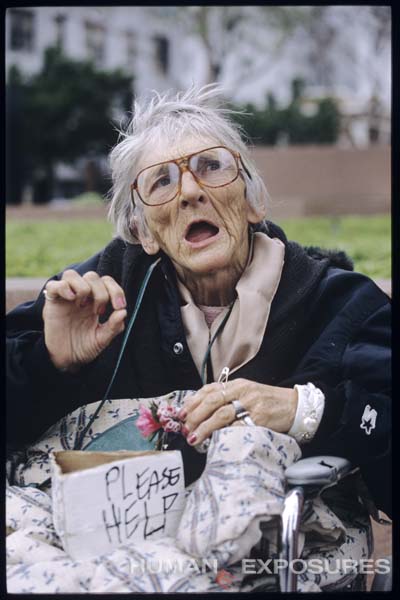In the early 1990s New York University School of Medicine prof Sam Tsemberis and the Gotham organization Pathways to Housing pioneered the “Housing First concept” which focuses on the chronically homeless, without requiring them to first give up alcohol or substance abuse.
Housing First is an alternative to a system of emergency shelter/transitional housing progression. Rather than moving homeless individuals from the streets to a public shelter, from a public shelter to a transitional housing program, and then to their own apartment in the community, Housing First moves the homeless individual or household immediately from the streets or homeless shelter into their own apartments.
Housing First, when supported by HUD, does not only offer housing but also provides wraparound case management services to the tenants. This provides stability for homeless individuals, increasing their success, accountability and self-sufficiency. The housing provided through government supported Housing First programs is permanent and “affordable,” meaning that tenants pay only 30% of their income towards rent.
With Obama Administration support (and 30% of HUD homelessness funds), Housing First resulted in an unprecedented 29.6% drop in the number of chronically homeless living on the streets (175,914 to 123,833 people)—from 2005 to 2007 alone. Today, Housing First programs successfully operate in New York City, San Francisco, Pittsburgh, Denver, Seattle, Philadelphia, Chicago, Atlanta, Los Angeles and smaller cities, such as Anchorage AK, Plattsburgh NY and Quincy MA.
Housing First is currently endorsed by the United States Interagency Council on Homelessness (USICH) as a “best practice” for governments and service-agencies to use in their fight to end chronic homelessness. These programs are all parts of the communities’10-year plans to end chronic homelessness, as advocated by USICH.
In Los Angeles County, the Home For Good project hopes to house all the area’s chronic homeless by 2016. Robert Harper and Charles Miller of Americorps make daily rounds of LA’s Skid Row seeking the most vulnerable homeless and working with other agencies to find them housing fast.
Harper declares:
A person is out here about to die and you tell them ‘Sign a waiting list and wait for a year? Come on, now. We’re known as the 90-day people.
When Home For Good case managers meet someone on the street, they create a vulnerability score from items like income, medical history, substance abuse and usual whereabouts. That info is computerized and made available to all participating agencies.
Considerable research has shown that the Housing First approach can save lots of money by keeping the chronically homeless out of jails, shelters and emergency rooms.
Housing First is now growing in popularity in Canada and is in many communities’ ten year plans to end homelessness. In Calgary, fewer than 1% of existing clients return to shelters or rough sleeping, there are 76% fewer days in jail and there is a 35% decline in police interactions This demonstrates improved quality of lives for those in the program, along with a huge cost savings on police, corrections and shelters
The Denver Housing First Collaborative, serving 200 chronically homeless, found a drop of 34.3% in emergency room visits, a 66% decline in inpatient costs, an 82% plummet in detox visits and a 76% reduction in incarceration days. Two years after entering the program, 77% of participants were still housed through it.
In Seattle, the Housing First program for alcoholics saved taxpayers more than $4 million in its first year. Thanks to Housing First, Boston was able to close some homeless shelters and reduce the number of beds in others.
The US Congress appropriated $25 million in the McKinney-Vento Homeless Assistance Grants for 2008 to show the effectiveness of Rapid Re-housing programs in reducing family homelessness. On May 20, 2009, President Obama signed the Homeless Emergency Assistance and Rapid Transition to Housing Act, which allows for the prevention of homelessness, rapid re-housing, consolidation of housing programs and new homeless categories.
The Housing First methodology is also being adapted to decreasing the larger segment of the homeless population, family homelessness, such as in the LA-based program Housing First for Homeless Families, which was established in 1988.
Dennis Culhane, a University of Pennsylvania homeless researcher, says:
There’s a lot of policy innovation going on around family homelessness, and it’s borrowing a page from the chronic handbook—the focus is on permanent housing and housing-first strategies.


















































